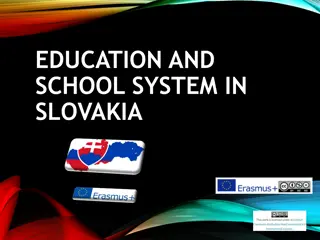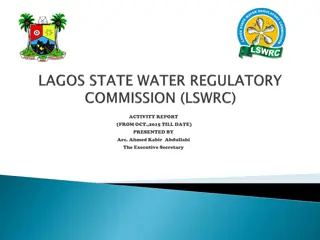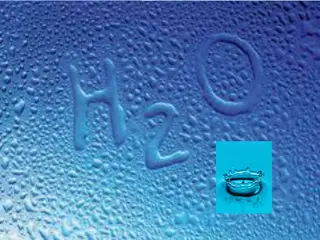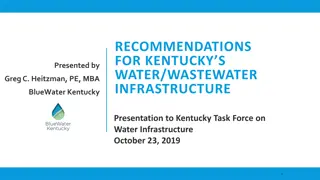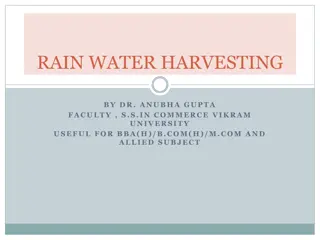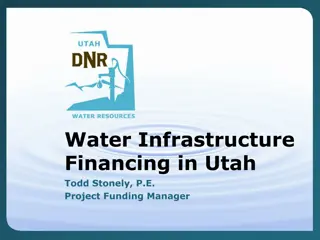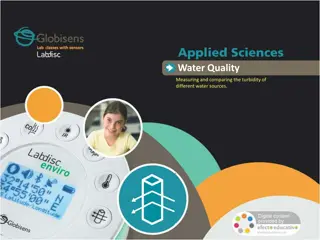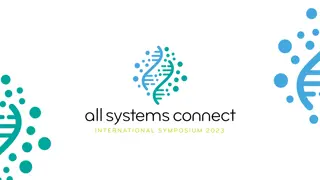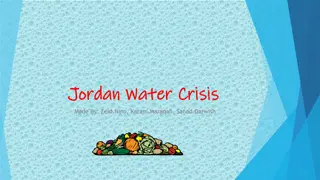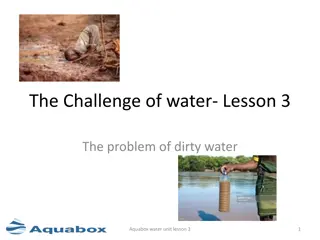Promoting Water Access in Schools for Better Health
Drinking water instead of sugary drinks can help prevent obesity and dental issues. Ensuring water access in schools is crucial as many children do not meet adequate intake levels. California Senate Bill 1413 mandates water access in school food service areas. Fountains are the main water source in schools, but improvements are needed. Initiatives like providing free drinking water can boost hydration levels and cognitive functions, benefiting students' overall well-being.
Uploaded on Sep 13, 2024 | 0 Views
Download Presentation

Please find below an Image/Link to download the presentation.
The content on the website is provided AS IS for your information and personal use only. It may not be sold, licensed, or shared on other websites without obtaining consent from the author. Download presentation by click this link. If you encounter any issues during the download, it is possible that the publisher has removed the file from their server.
E N D
Presentation Transcript
Anisha Patel,MD,MSPH May 29,2014
Drinking water instead of sugary drinks can prevent obesity and dental caries Maintaining appropriate hydration levels can improve cognitive functioning Most children and adolescents in the U.S.do not meet adequate intake levels for water 1 in 6 children and adolescents do not drink tap water
Children spend substantial time in school Water access in school food service areas is required by law California Senate Bill 1413 Healthy Hunger-Free Kids Act
Water not usually offered on the lunch tray Drinking fountains may be available Bottled water available for purchase
Free DrinkingWater Access in California Public Schools By Location % of Schools Reporting Access N=240 schools Temp Structures 37 63 Classrooms 75 Food Service Areas 80 Outdoor Exercise Areas 82 Gym 95 Common Areas 0 20 40 60 80 100
100 Schools Reporting Access (%) 90 83 80 72 70 60 50 40 30 20 10 0 Pre Post p=0.048
50 % of Students Drinking FreeWater at Lunch 45 40 35 30 Fountains 25 Non-fountain 20 15 10.7 8.2 10 3.7 5 1.1 0.7 0 Elementary Middle/Junior High N=24 schools
Fountains are the Most Common Source ofWater in Schools
OPTION A OPTION B
San Francisco Bay Area region 12 middle schools 8 intervention 4 control Low-income and minority schools Matched on: School student enrollment,% free/reduced price lunch,% Latino,% Black Pre-post design
Water testing and remediation Bottleless coolers or dispensers Cups
Six weeks Posters Student announcements Parent newsletters Raffles and giveaways
Students Observed Drinking FreeWater 100 90 80 70 60 50 40 Baseline Follow-up 30 20 10 16 13 at Lunch (%) 3 3 1 1 0 Control Dispenser Cooler
5 V olume ofWaterTaken from FreeWater 4.5 4.06 Sources at Lunch(ounces/student) 4 3.5 3 2.5 Baseline 2 Follow-up 1.52 1.5 1 0.5 0.010.12 0.03 0.03 0 Dispenser Cooler Control
Total Intervention Costs Dispenser ($) Cooler ($) Upfront Cost 282-357 370-445 Ongoing Cost 3188 1729 Total Cost 3470-3545 2099-2174 Total Cost (without labor) 1416-1491 1504-1579
? Environmental Change & Promotion Baseline
4 focus groups (N=22) 2 dispenser schools 2 bottleless cooler schools Example questions What did you think about the water? Did you notice any posters,student announcements or other activities at the school? How would you get students excited about drinking water?
If there was a place,water machines and put them right outside the building,the classroom or something,I would drink more water.Cause we got six periods right?And if we re supposed to drink seven glasses of water a day,every class I would go to,I would drink water Y ea,like outside right here by the gym the water gets hot -
I use the cups a lot[To drink what?] to drink soda. There s a soda machine by the fire station! Someone already busted up into it.
They should do like a play . Or a water experiment to find something about,just do some experiments with water.
WhyWaterWorks for Schools: Children spend substantial time in school Waterisone ofthe healthiest dnnks for children Federal law requires schools to provide free water with meals WATERWORKS AGuldetoImprovingWater AccessandConsumptionIn SchoolstoImproveHealth and Support Leaming TheWaterWorks GuideWill Help Y our School Get From OptionA to Option B. What will you do to encourage students to drink water? This auidepnwides . . . . . .. . .tools. andresources t o helpschools ensure accw t o andpromote consumpdon cf drinldnswater. Learn How To: Test water quality and remediate problems l f C A L I F ' O a A D V O C A T E S Choose a water delivery option N I A '--" L K S r = Cond uct promot ional and educational activities - l 'D D D P Q L I D Y Implement policy that supports water access and consumption Many students don't have a choice so they drink juice and sugary drinks such as soda and sports drinks instead of water. Evaluate your program and make improvements http://wateri nschools.org/ pdfs/WaterWorksGu ide2014.pdf
Partnership in Santa Clara County First Five,Public Health Department,Water District Goals Installation of water stations in schools,public areas Decrease use of single-use bottled water Educate about the importance of drinking tap water Increase compliance with SB 1413
RobertWood Johnson Foundation Healthy Eating Research Program,San Francisco Foundation,National Institutes of Health for funding support Ariana Oliva,Ellen Braff-Guajardo,Ken Hecht, Claire Brindis,Anna Grummon,George Manalo Leclair,and volunteers for their contributions to this work



